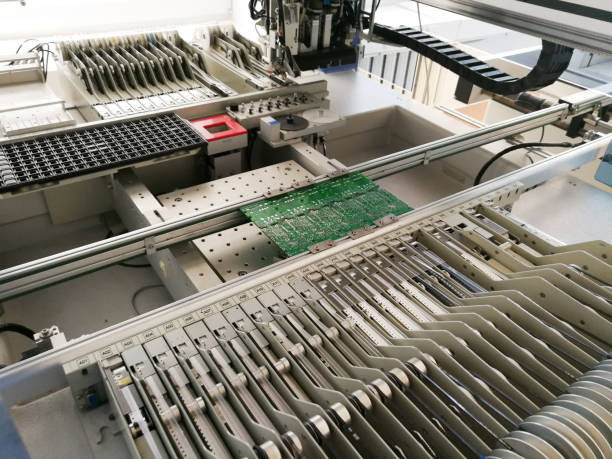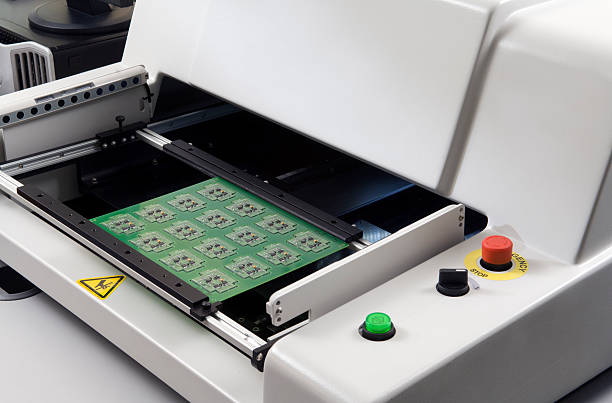Content Menu
● Introduction
● What is the Shelf Life of SMT Components?
>> Understanding Moisture Sensitivity Levels (MSL)
>> The Impact of Moisture on SMT Components
● Factors Affecting the Shelf Life of SMT Components
>> Storage Conditions
>> Packaging Types
>> Temperature Control
>>> Recommended Temperature Ranges
● Best Practices for Storing SMT Components
>> Packaging Innovations for Extended Shelf Life
>>> Use of Desiccants
>> Addressing Common Storage Challenges
>>> Inventory Management Practices
● Common Issues with Expired SMT Components
>> Testing Expired Components
● The Importance of Manufacturer Guidelines
>> Industry Standards
● Conclusion
● FAQ
>> 1. What are Moisture Sensitivity Levels (MSL)?
>> 2. How does temperature affect the shelf life of SMT components?
>> 3. Can expired SMT components be used?
>> 4. What are the best storage practices for SMT components?
>> 5. How can I tell if an SMT component has expired?
● Citations:
Introduction
Surface Mount Technology (SMT) components are essential in modern electronics, providing compact and efficient solutions for circuit design. However, like all materials, they have a finite shelf life. Understanding the shelf life of SMT components is crucial for manufacturers and engineers to ensure reliability and performance in electronic assemblies. This article will delve into the factors affecting the shelf life of SMT components, best practices for storage, common issues with expired components, and more.

What is the Shelf Life of SMT Components?
The shelf life of SMT components refers to the period during which they can be stored without significant degradation in quality or performance. Several factors influence this period, including moisture sensitivity, temperature, and packaging. For instance, components with a Moisture Sensitivity Level (MSL) of 1 can be stored indefinitely under controlled conditions, while those with higher MSL ratings require more stringent storage conditions.
Understanding Moisture Sensitivity Levels (MSL)
Moisture Sensitivity Levels (MSL) are critical in determining how SMT components should be handled and stored. The MSL rating system, established by the Joint Electron Device Engineering Council (JEDEC), categorizes components based on their vulnerability to moisture-induced damage during soldering processes. Components with an MSL of 1 are the least sensitive and can be stored indefinitely under proper conditions, while those with higher MSL ratings require more careful handling and shorter exposure times to ambient conditions.
The Impact of Moisture on SMT Components
Moisture can penetrate the packaging of SMT components, leading to issues such as "popcorning" during solder reflow processes. This occurs when moisture trapped inside the component rapidly expands, causing delamination or cracking. To prevent such damage, it is essential to store components in moisture-controlled environments and use moisture barrier bags (MBB) with desiccants.
Factors Affecting the Shelf Life of SMT Components
Storage Conditions
Proper storage conditions are essential to prolong the shelf life of SMT components. Ideal conditions include low humidity and stable temperatures. Storing components in moisture barrier bags with desiccants can significantly extend their usable life.
Packaging Types
The type of packaging used can also affect the shelf life. Vacuum-sealed packaging is often preferred for its ability to minimize moisture ingress, thereby protecting sensitive components. Additionally, anti-static packaging is crucial for preventing electrostatic discharge (ESD) damage during storage and handling.
Temperature Control
Temperature is another crucial factor affecting the shelf life of SMT components. High temperatures can accelerate chemical reactions that degrade materials, while low temperatures can help preserve the integrity of components. Ideally, SMT components should be stored at temperatures below 30°C with relative humidity levels kept under 60%.
Recommended Temperature Ranges
- Optimal Range: 20°C to 25°C
- Maximum Allowable Temperature: 30°C
- Humidity Levels: Below 60% RH
Maintaining these temperature ranges helps prevent thermal degradation and ensures that components remain functional over time.
Best Practices for Storing SMT Components
To maximize the shelf life of SMT components, it is recommended to store them in a controlled environment with low humidity and stable temperatures. Using moisture barrier bags and desiccants can help maintain optimal conditions. Regularly monitoring storage conditions and adhering to manufacturer guidelines are also crucial.
Packaging Innovations for Extended Shelf Life
Advancements in packaging technology have significantly improved the shelf life of SMT components. Vacuum-sealed packaging and the use of inert gases to displace oxygen in packaging are effective methods to reduce oxidation and moisture ingress. These innovations help maintain the quality and reliability of components over extended storage periods.
Use of Desiccants
Desiccants play a vital role in maintaining low humidity levels within packaging. Common desiccants include silica gel and molecular sieves, which absorb moisture effectively. It's essential to replace or recharge desiccants regularly to ensure they continue functioning optimally.

Addressing Common Storage Challenges
Despite best efforts, challenges in storing SMT components persist. Factors such as fluctuating environmental conditions, improper handling, and inadequate packaging can compromise component quality. Implementing strict inventory management practices and regular audits of storage conditions can mitigate these risks.
Inventory Management Practices
- First-In-First-Out (FIFO): This method ensures that older stock is used before newer stock.
- Regular Audits: Conducting periodic checks on inventory helps identify any potential issues before they affect production.
- Environmental Monitoring: Using sensors to track temperature and humidity levels can provide real-time data on storage conditions.
Common Issues with Expired SMT Components
Expired SMT components can lead to several issues:
- Solderability Problems: As components age beyond their shelf life, their solderability may diminish due to oxidation or contamination on their leads.
- Delamination: Moisture absorption can cause delamination between layers within the component package.
- Physical Damage: Aging may lead to cracks or other physical damages that compromise functionality.
These problems can compromise the integrity of electronic assemblies, leading to failures and increased costs.
Testing Expired Components
Before using expired SMT components, it is advisable to conduct thorough testing:
- Solderability Tests: These tests assess whether a component can still be effectively soldered onto a PCB.
- Visual Inspection: Inspecting for visible signs of damage or corrosion can help determine usability.
- Electrical Testing: Functional tests should be performed to ensure that expired components still meet performance specifications.
The Importance of Manufacturer Guidelines
Manufacturers often provide specific guidelines regarding the shelf life and storage conditions for their products. Adhering to these guidelines is crucial for maintaining component integrity. It's essential for engineers and manufacturers to keep abreast of any updates or changes in these recommendations as technology evolves.
Industry Standards
Several industry standards govern the handling and storage of electronic components:
- IPC/JEDEC J-STD-033: This standard provides guidelines on handling moisture-sensitive devices.
- IPC-A-610: This standard outlines acceptability criteria for electronic assemblies, including considerations for component quality.
Following these standards not only ensures compliance but also enhances overall product reliability.
Conclusion
The shelf life of SMT components is a critical consideration for manufacturers and engineers aiming to ensure the reliability of electronic products. By understanding the factors that affect shelf life and implementing best storage practices, the longevity and performance of SMT components can be optimized. Adhering to guidelines for moisture sensitivity, temperature control, and packaging will help prevent degradation, ultimately leading to more reliable and cost-effective electronic assemblies.

FAQ
1. What are Moisture Sensitivity Levels (MSL)?
Moisture Sensitivity Levels (MSL) indicate the susceptibility of SMT components to moisture-induced damage during soldering. Higher MSL ratings require more stringent storage conditions.
2. How does temperature affect the shelf life of SMT components?
Temperature plays a significant role in the shelf life of SMT components. High temperatures can accelerate degradation, while stable, low temperatures help preserve component integrity.
3. Can expired SMT components be used?
Using expired SMT components is risky as they may have compromised solderability and structural integrity, leading to potential failures in electronic assemblies.
4. What are the best storage practices for SMT components?
The best storage practices include maintaining low humidity and stable temperatures, using moisture barrier bags, employing desiccants, and following manufacturer guidelines.
5. How can I tell if an SMT component has expired?
Signs of expired SMT components include visible corrosion, poor solderability, physical damage such as delamination, or failure during electrical testing. Testing and inspection can help determine their viability.
Citations:
[1] https://www.allegromicro.com/en/insights-and-innovations/technical-documents/general-semiconductor-information/semiconductor-handling-storage-shelf-life
[2] https://www.venkel.com/technical/storage-and-shelf-life
[3] https://www.circuitnet.com/experts/86742.html
[4] https://forum.digikey.com/t/useful-information-on-shelf-life/7112
[5] https://www.gevernova.com/grid-solutions/suppliers/files/ga-src-0003%20component%20shelf%20life%20and%20storage%20(rev%201).pdf




















